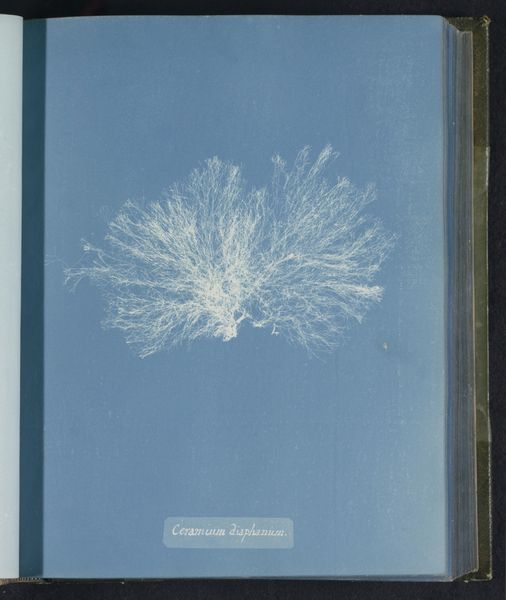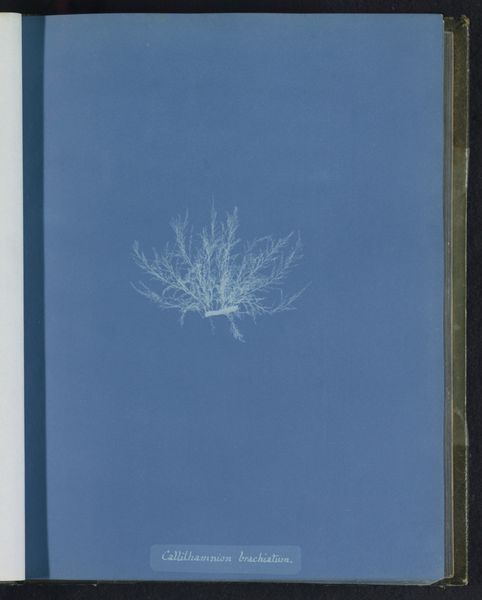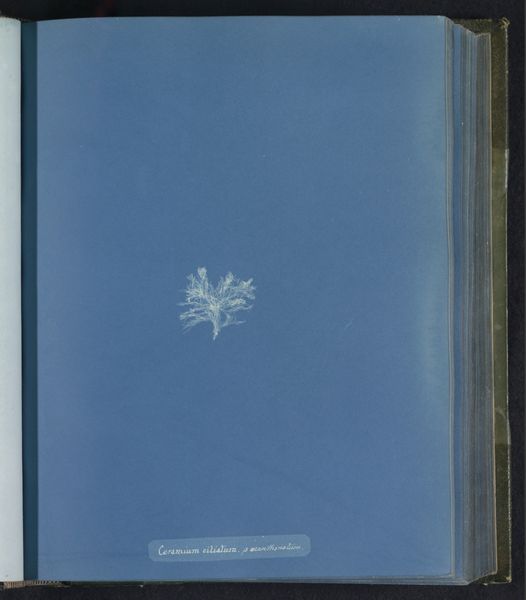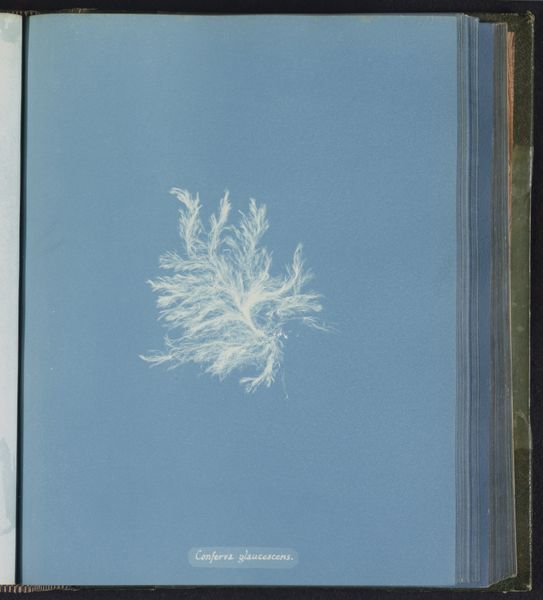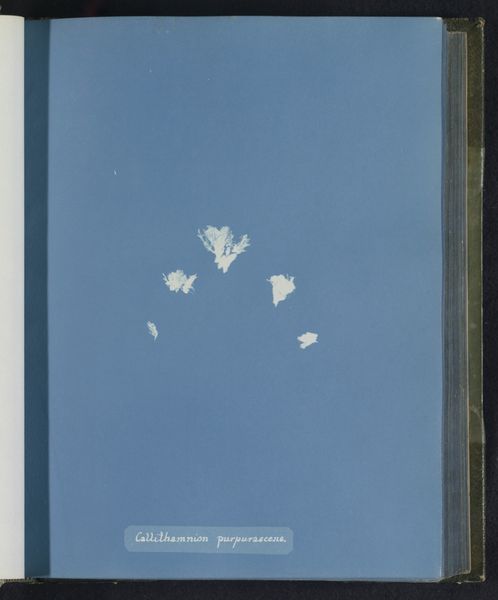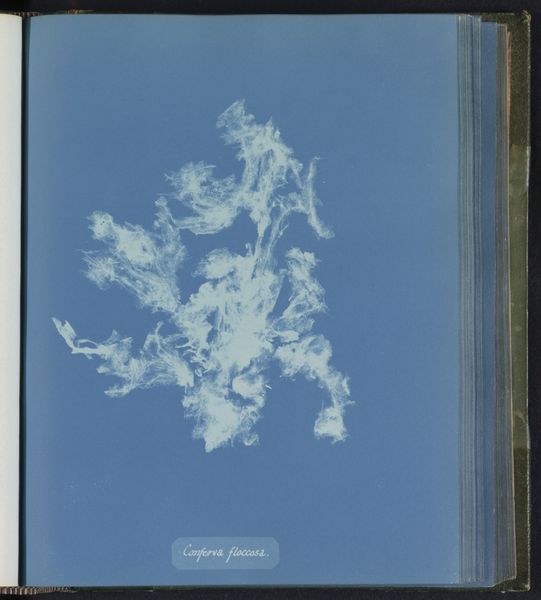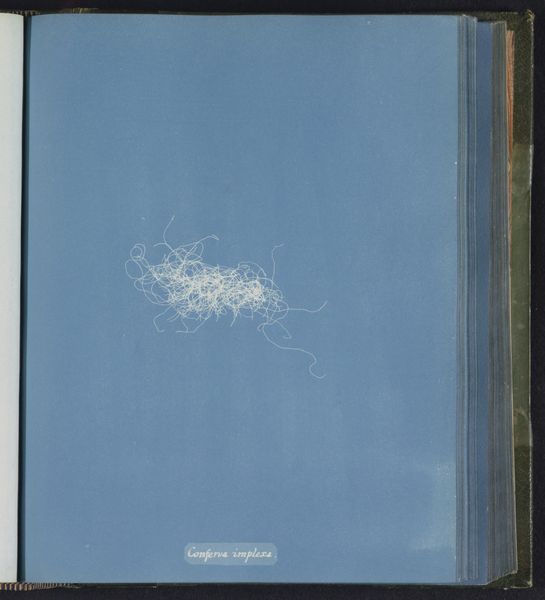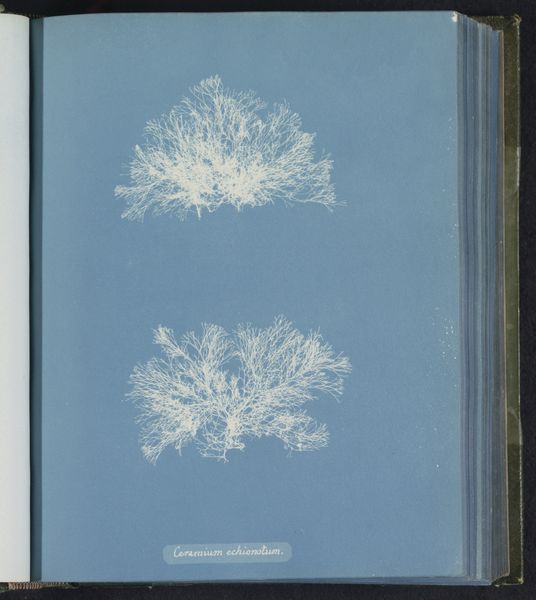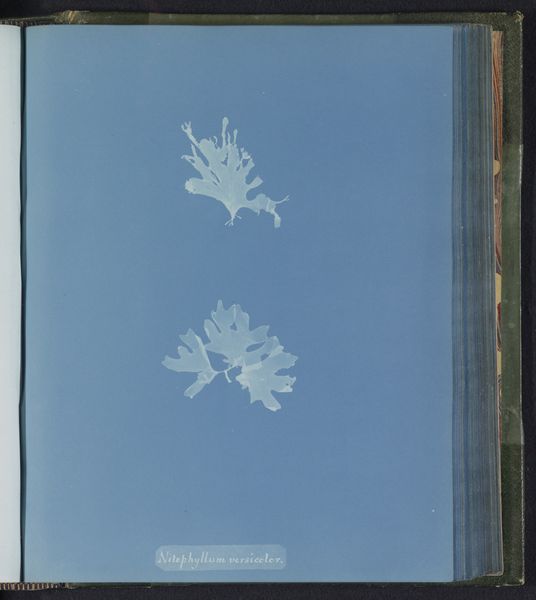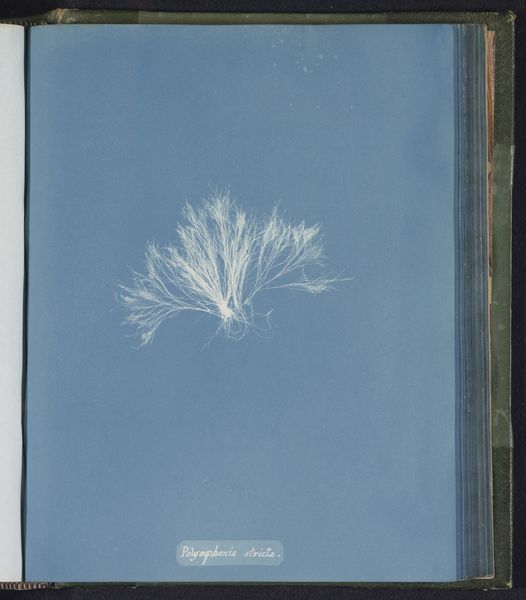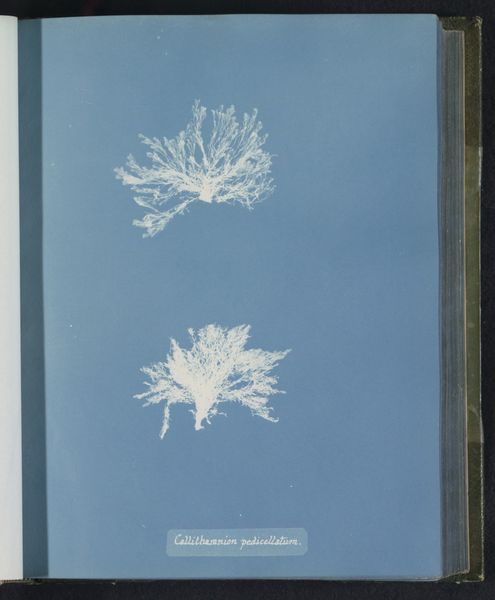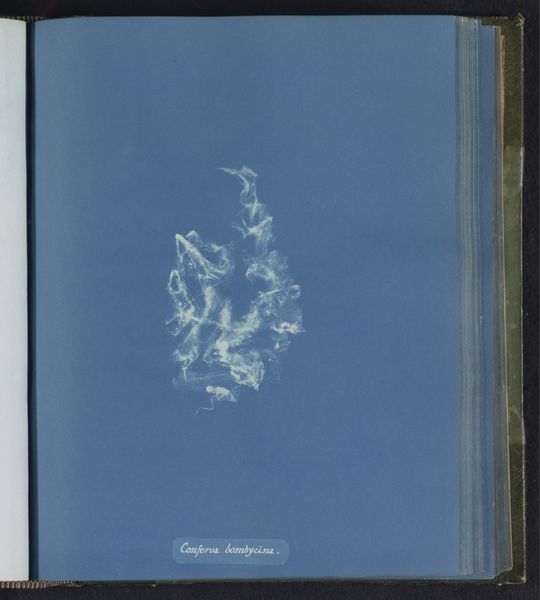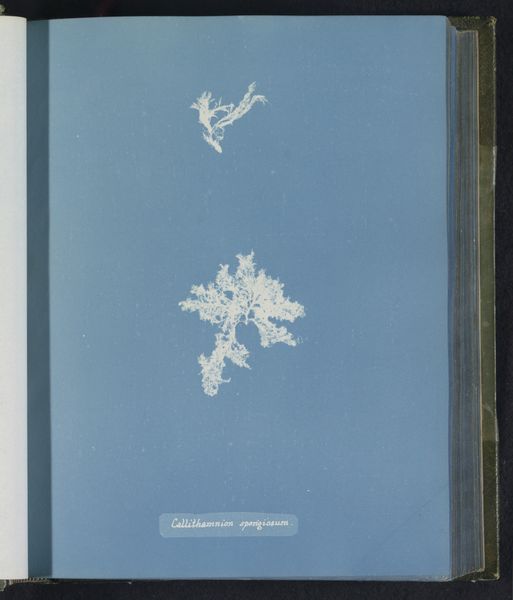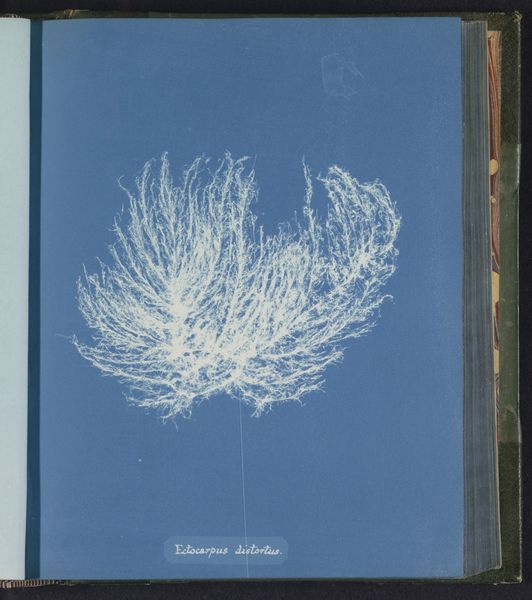
print, cyanotype, photography
#
still-life-photography
# print
#
abstract
#
cyanotype
#
photography
Dimensions: height 250 mm, width 200 mm
Copyright: Rijks Museum: Open Domain
Curator: Here we have Anna Atkins’s “Ceramium nodosum,” a cyanotype from roughly 1843 to 1853. What strikes you most when you first view it? Editor: Its spectral presence. A delicate, ghostly white form emerges from this deep, saturated Prussian blue field. The composition centers on this almost ethereal, radial structure. Curator: Precisely. This isn't merely an artistic interpretation; it's a scientific document. Atkins created these cyanotypes, a photographic printing process, to meticulously catalogue seaweed specimens. Think of the laborious process: collecting the algae, carefully arranging it on treated paper, exposing it to sunlight... Editor: So, process becomes paramount. The sun, the paper, the chemical reaction. The result feels so far removed from conventional photographic practices, almost like photograms, and close to photorealist prints from her time, but using the sun itself to "draw". How the production of such delicate and aesthetically remarkable prints subverts and goes beyond conventional gender expectations related to female labor. Curator: Absolutely. Cyanotype printing granted Atkins the ability to meticulously reproduce the seaweed's form. It blurred the line between art, science, and craft. Her scientific pursuit demanded aesthetic choices in framing, placement, and emphasis. It really questions who does science and in which format. Editor: Agreed, the striking blue hue also carries an intrinsic weight. Blue is often associated with melancholy and dreams, a strange, romantic complement to her scientific objective. I'm drawn into the abstract arrangement—an unexpected juxtaposition of scientific rigor and emotive effect. The print itself appears as a metaphor for knowledge—its fragility, precision, and our complex relation with nature. Curator: I find her unique blending of observation and method deeply relevant today. Consider the materials involved. The sensitivity to light, the quality of the paper and how they influence the ultimate impact. Editor: It's certainly a striking marriage of scientific ambition and unintentional visual allure. There's a peculiar tension that sustains attention long after the botanical identity of "Ceramium nodosum" becomes apparent. Curator: Agreed. There's so much more than meets the eye regarding materiality.
Comments
No comments
Be the first to comment and join the conversation on the ultimate creative platform.
